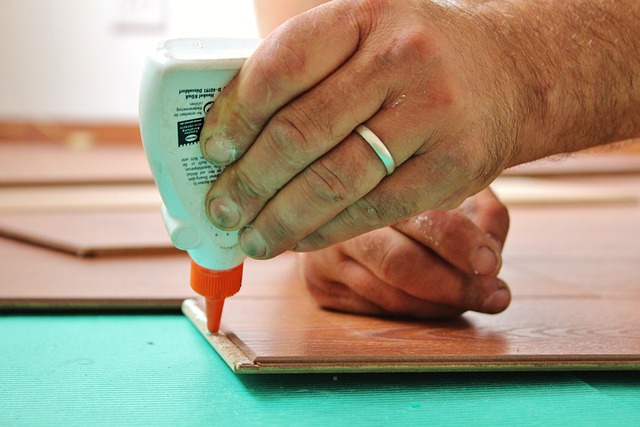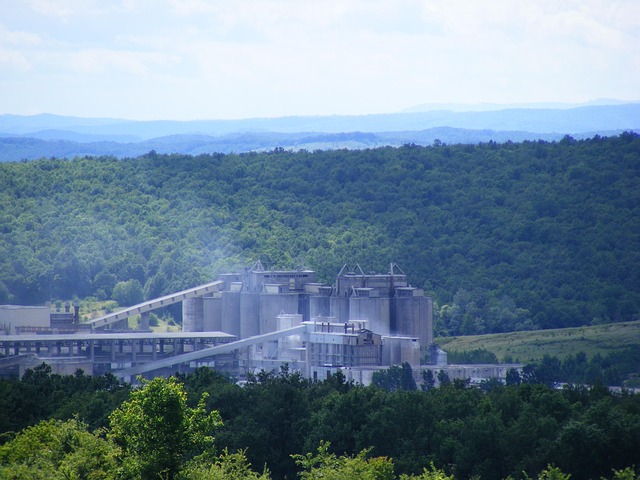Glue Laminated Beams (GLBs) are high-performance structural components made by bonding multiple layers of wood veneers with strong adhesives. They offer unmatched strength, durability, and eco-friendliness for residential and industrial projects. To install GLBs, gather necessary tools and materials, prepare a workspace, apply adhesive, connect beam elements, and secure joints. Proper installation techniques ensure structural integrity and mitigate issues like misalignment and moisture content. Best practices for surface preparation, high-quality adhesives, and expert techniques enhance GLB durability. For information on Glue Laminated Beam Definition and optimal construction practices, contact (607) 369-9341 or visit unalam.com.
A glue laminated beam, also known as a glued laminating beam or GLB, is an innovative structural element crafted from multiple layers of wood veneers bonded together with strong adhesives. This comprehensive installation guide delves into the intricacies of GLB construction, detailing essential steps and best practices for professionals and DIY enthusiasts alike. From understanding the concept to ensuring structural integrity, this guide covers all aspects of glue laminated beam assembly.
- Glue Laminated Beam: Understanding the Concept
- Materials and Tools Required for Installation
- Step-by-Step Guide to Beam Assembly
- Ensuring Structural Integrity During Installation
- Common Challenges and Their Solutions
- Best Practices for Longevity and Stability
Glue Laminated Beam: Understanding the Concept

A Glue Laminated Beam (GLB) is a cutting-edge structural component crafted through an advanced wood laminating process. This technique involves bonding multiple layers of wood veneers together with strong adhesives, creating a single, robust beam. The resulting structure offers unparalleled strength and durability, making it an eco-friendly alternative to conventional building materials. The GLB concept leverages the natural strength of wood while enhancing its performance, ensuring longevity in various applications.
Beyond its structural advantages, the glue laminated beam holds significant promise in long-term care for glued wooden structures, providing a sustainable solution for both residential and industrial projects. Its application ranges from architectural frameworks to heavy-duty industrial machinery components, showcasing the versatility of this innovative construction element. For those seeking eco-friendly structural solutions, GLBs offer a compelling option, with potential cost savings and reduced environmental impact, as evidenced in glue laminated beam cost analysis studies. To learn more about these advanced wood products, visit us at unalam.com.
Materials and Tools Required for Installation

To install a glue laminated beam successfully, you’ll need a specific set of materials and tools tailored for this structural component’s unique construction. Glue laminated beams, defined as high-performance wood structures made by gluing together multiple layers of lumber, require specialized equipment to ensure proper assembly and longevity.
Essential items include a circular saw or table saw for cutting the beam to spec, a joiner or miter saw for precise angles, and various types of glue designed for structural applications. Safety gear like safety glasses and work gloves is paramount, while a level, square, and measuring tape aid in ensuring accurate installations. For expert advice and guidance tailored to your project, give us a call at (607) 369-9341. The following aspects of glue laminated beams—how they’re made, their diverse applications, and remarkable strength and durability—highlight why they’re a preferred choice in modern construction projects.
Step-by-Step Guide to Beam Assembly

To install a glue laminated beam, follow this comprehensive step-by-step guide. First, gather all necessary materials including the glue laminated beam, suitable connectors, and any required hardware. Ensure that your workspace is clean, dry, and free from debris to maintain the integrity of the beam during assembly.
Begin by laying out the beam components on a flat surface, ensuring proper alignment. Next, apply the recommended adhesive along the joints according to the manufacturer’s instructions. Carefully connect the beam elements using the appropriate connectors, following the structural design plan. Once connected, securely fasten the joints with temporary clamps to hold them in place until the adhesive sets. After the adhesive has cured, remove the clamps and inspect the beam for any signs of misalignment or gaps. If adjustments are needed, make them at this stage. Remember, budgeting for glue laminated beams in construction considers their superior strength-to-weight ratio, making them a cost-effective choice for various structural applications. To learn more about key requirements for glue laminated beams and their benefits, visit us at unalam.com.
Ensuring Structural Integrity During Installation

Ensuring structural integrity is paramount when installing glue laminated beams, a cutting-edge construction material that combines multiple layers of dimensional lumber with powerful adhesives. These beams offer significant advantages over traditional steel I-beams in terms of strength-to-weight ratio and aesthetic appeal, making them a popular choice for modern architecture.
To guarantee structural soundness, proper installation techniques are essential. This includes meticulous measurement and cutting to avoid any misalignments, as well as ensuring all joints are securely fastened with the latest advancements in glue lamination technology. Unlike steel I-beams, which may require extensive welding, glue laminated beams offer a faster, more efficient installation process. For expert guidance throughout your project, don’t hesitate to reach out to us at (607) 369-9341.
Common Challenges and Their Solutions

When installing Glue Laminated Beams (GLB), builders often encounter challenges that can impact the structural integrity and longevity of glue laminated wood construction. Understanding the nature of these obstacles is key to ensuring successful projects. One common issue is misalignment during installation, which can compromise the beam’s strength and durability. To mitigate this, detailed measurement and layout procedures should be followed, utilizing precision tools for accurate positioning.
Another challenge pertains to environmental factors, particularly moisture content. In humid conditions, wood expansion and contraction can affect GLB stability. This problem is addressed through proper treatment and sealing of the beams, as well as considering specific applications and designs that align with the local climate’s sustainability aspects of glue laminated beams. Commercial projects benefit from these strategies, ensuring both structural soundness and the longevity of glue laminated wood construction. For in-depth guidance and expert advice on GLB installation, find us at unalam.com.
Best Practices for Longevity and Stability

To ensure the longevity and stability of glue laminated beams, several best practices should be followed. First and foremost, proper preparation of the surfaces is crucial. This involves meticulous cleaning to remove any debris, oil, or moisture that could compromise the adhesive bond. The latest advancements in glue lamination technology offer superior bonding strength when the surfaces are properly conditioned.
Additionally, the choice of glue and its application method significantly impact the beam’s performance. Using high-quality adhesives specifically designed for structural applications is essential. Expert installation techniques, including controlled pressure and temperature during curing, contribute to the overall stability of the glued laminated beam. Disadvantages of glue laminated beams can be mitigated by adhering to these practices, ensuring a robust and durable final product. Give us a call at (607) 369-9341 for more information.
A glue laminated beam, or GLB, offers a robust and sustainable solution for structural support. By understanding the concept, selecting the right materials, and following best practices outlined in this guide—from assembly to ensuring structural integrity—you can successfully install a GLB, enhancing the longevity and stability of your construction project. Remember that proper installation is key to leveraging the full potential of these innovative beams.














